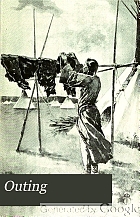
This bibliographic essay originally appeared in the November 2016 issue of Choice (volume 54 | number 3).
The ubiquitous bicycle is at home in the library stacks, as it is in the garage, the dorm room, or the bicycle rack. Humankind's most efficient form of transportation first appeared in the 1810s. Improvements and modifications over the next seventy years led to the safety, or diamond frame bicycle, that remains today's standard design. Books about bicycling began appearing in the 1880s in numbers following the rise and fall of interest in the wheel. Readers will note a significant number of titles from the late nineteenth century, the golden age of cycling, fewer books from 1900 through World War II, and then increasing numbers beginning with the baby boom and accelerating in the twenty-first century.
As the following titles indicate, the humble bicycle, be it a one-speed Huffy from a big-box store or a top-of-the-line, twenty-four-speed Trek from an elite bicycle shop, offers the rider more than independence. The bicycle can be a window on the world, an escape vehicle, an opportunity to clear the mind of the day’s mundane activities and replace them with adventure and new friends. It is a constant companion with which one discovers and explores new worlds. To everyone else, the bicycle is simply a collection of tubes, but to the rider the bicycle has its own personality. Those who gave up bicycles in favor of an automobile are provided, vicariously, with these same benefits by those who ride and write. Be they fictional or real-life experiences, books on bicycling expand the mind and, for undergraduates, offer research opportunities to be ignored only at one’s peril.
This bibliography includes both primary and secondary sources for librarians to assist undergraduate students doing research on a wide variety of subjects that will be enriched by considering the bicycle’s place in human society. While predominantly geared toward North American society, it does touch on the rest of the world. Although some of the books may be harder to find, they are all available through interlibrary loan; more and more of the older titles are being reprinted or can be found in digital form. From books by Nobel laureates to books by bicycle messengers, students interested in any of the social sciences and humanities disciplines, including but not limited to history, sports science, travel, literature, engineering, American studies, sociology, geography, and urban planning, will find ideas of value.
For over a quarter century, the International Cycling History Conference has brought together an array of historians, sociologists, geographers, museum curators, editors, and bicycle aficionados for presentations on all aspects of cycling. From the first meeting in Glasgow in 1990 to the present, the conference proceedings, Cycle History, contain a treasure trove of material. For those whose interest is the late nineteenth century, The Wheelman (1882–1883), renamed Outing and the Wheelman (1884–1885) and finally Outing (1885–1923), contains numerous articles, news events, and fiction pieces on bicycling during the formative years. Interestingly, in the early twentieth century it began a section on the automobile and soon after published its last piece related to bicycling.
Duncan R. Jamieson's PhD is in American intellectual history. As a long-distance bicyclist, he began researching the history of bicycle travel; this resulted in his book The Self-Propelled Voyager (Rowman and Littlefield, 2015). He is professor of history at Ashland University, Ashland, Ohio
 The wheelman by
The wheelman by  Outing by
Outing by